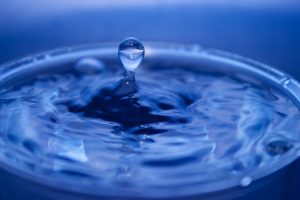Below is a snapshot of the Water Infrastructure Improvements for the Nation Act  (S. 612) passed late last week by the Congress. The President has indicated that he will sign the bill.
(S. 612) passed late last week by the Congress. The President has indicated that he will sign the bill.
Title I of the Act is entitled, “Water Resources Development.” Section 1104 provides that the Secretary of the Army (Secretary) will prepare an inventory of the general structural condition of all Federal breakwaters and jetties protecting harbors and inland harbors within the United States. Section 1122 encourages the beneficial use of dredged material through the use of 10 pilot projects. Section 1135 amends the Water Resources Development Act of 2007 to make available on the Internet all Corps of Engineer (Corps) dates relating to various water resources development projects, subject to confidential business information considerations. Section 1145 provides that the Secretary and Corps will conduct an assessment of the recovery of the Gulf Coast oyster beds that were harmed by Hurricane Katrina, the Deepwater Horizon spill and local floods. Section 1163 addresses Wetlands Mitigation Banks and in-lieu fee arrangements.
Title II is entitled the “Water and Waste Act of 2016.” Section 2105 amends the Safe Drinking Water Act to enhance the reduction of lead in drinking water. An Environmental Protection Agency (EPA) grant system is established for lead reduction projects, including lead service line replacements. Section 2203 provides that the Secretary of Health and Human Services will establish a lead exposure registry to collect data on lead exposures, and guidelines will be developed to list “best practices” regarding lead screening and lead prevention in drinking water. Subtitle C of Title II amends Section 4005 of the Solid Waste Disposal Act (SWDA) to allow states to submit for EPA review, a state permitting program that regulated the management and disposal of coal combustion residuals. The particular industrial waste will be regulated as a non-hazardous waste subject to Subtitle D of the SWDA. If the state program is approved by EPA, then permitting will be the responsibility of the state, and it will operate in lieu of EPA’s rules located at 40 C.F.R. Part 257. This should strengthen the validity of state regulatory programs, but EPA still possesses its “Open Dump” enforcement authority.
Title III is entitled “Natural Resources.” Section 3801 reauthorizes the Water Desalination Act of 1996 (WDA) and the WDA will authorize the development of “metrics” to measure the efficiency and protectiveness of desalination projects. Subtitle J of Title III is devoted to “California water.” Section 4001(a) states the policy: “[T]he Secretary of the Interior and Secretary of Commerce shall provide the maximum quantity of water supplies practicable to Central Valley Project agricultural, municipal and industrial contractors, water service or repayment contractors, water rights settlement contractors, exchange contractors, refuge contractors, and State Water Project contractors, by approving, in accordance with applicable Federal and State laws … as quickly as possible, based on available information.” The emphasis throughout this long provision is on the need to make water available as soon as possible, and various deadlines are embedded in the law.
Title IV is entitled, “Other Matters.” Section 5004 is concerned with the aftermath of the Gold King spill. EPA is directed to facilitate the payment of all claims filed against the government under the Federal Tort Claims Act. Section 5011 will relax the federal regulation over smaller capacity aboveground storage tanks used on farms. The applicable EPA oil spill prevention, control, and countermeasure (SPCC) rules are made inapplicable to these smaller above ground containers used by farmers. Section 5014 addresses Environmental Banks. Guidelines for the maintenance and oversight of environmental banks in Louisiana will be developed to set forth procedures for the establishment and approval of environmental banks, their siting criteria and financial responsibility criteria. These guidelines must comply with the Clean Water Act, National Environmental Policy Act, the Oil Pollution Act and the Endangered Species Act.
Photo: Dirklaudio, Gocce D’Acqua (Water Drops) – Creative Commons
 Gravel2Gavel Construction & Real Estate Law Blog
Gravel2Gavel Construction & Real Estate Law Blog


